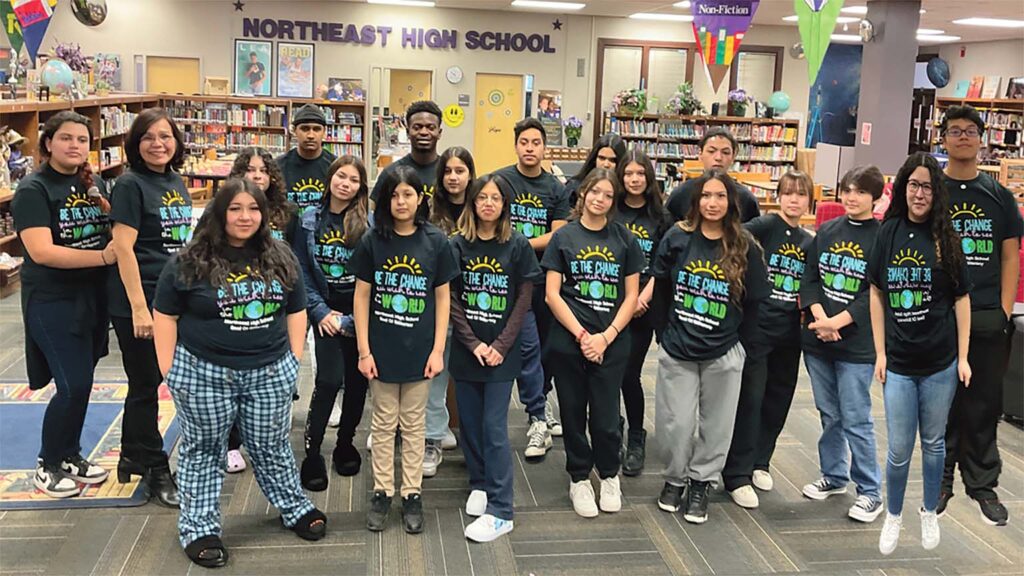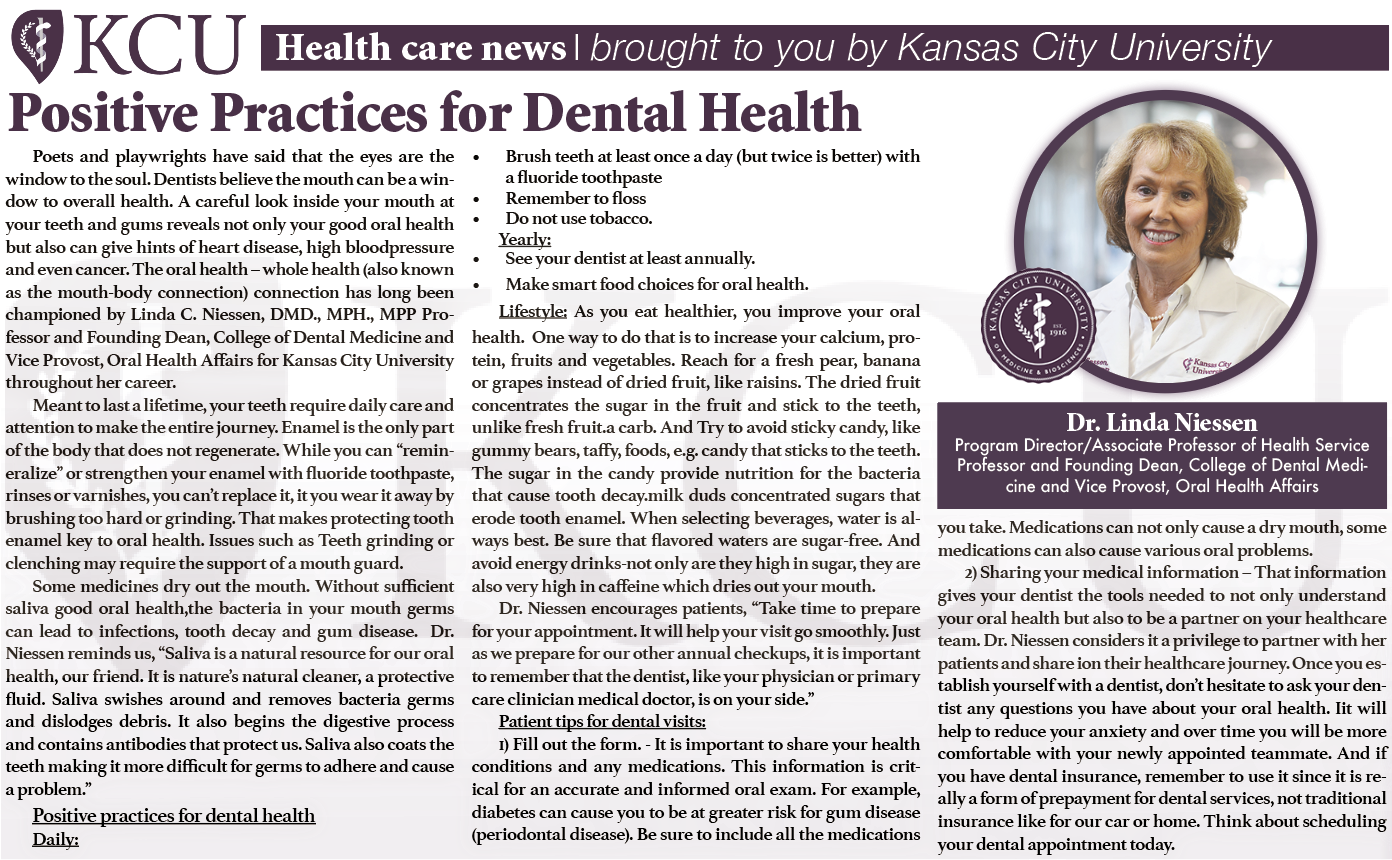
By Daisy Garcia-Montoya
As the need for bilingual employees increases in the workforce, Kansas City Public Schools (KCPS) is offering its students an opportunity to earn a Seal of Biliteracy to show their proficiency in a second language or more, to prepare them for the workplace.
The Seal of Biliteracy program was first brought to the district in 2018 when the school system met the criteria set forth by the Missouri Department of Elementary and Secondary Education to award Missouri’s state Seal of Biliteracy to students who met the requirements. Students who have achieved proficiency in English and an additional language before their high school graduation are awarded the seal, either Standard or Distinguished, on their high school transcript.
The initiative aims at preparing students with real-world skills to match the current job outlooks, give students the opportunity to earn college credit, encourage the learning of a new language and develop a global mindset, and provide employers with a way to identify bilingual employees.
Allyson Hile, Director of Language Services and Cultural Equity said it’s a great opportunity for students to not only build on their skills and resume, but it allows them the opportunity to gain a global perspective and learn the value of knowing a new language and culture.
“There’s job skills, there’s benefits to attending college and saving money but it also opens your eyes to a different way of looking at the world, right?” Hile said. “Different perspectives, travel opportunities. I think, especially when you get a job and you’re bilingual, you have all kinds of more opportunities available to you. It also connects you to your culture, right, if you’re away from it.”
For students who are from Mexico, Somalia or the Democratic Republic of Congo to learn their families’ native language, it can be a connection back to their heritage.
The Seal of Biliteracy is recognized by various Missouri state universities and colleges such as Missouri State University and Truman State University, which would allow students to potentially receive between six and 14 college credits, saving students money on college courses.
Lincoln College Preparatory Academy’s (LCPA) Seal of Biliteracy coordinator Seth Oldham said that students who achieve the standard seal can earn up to six credit hours and save nearly $2,000 based on an average $300 per credit hour.
“By being able to skip those six credit hours and having them attached to their transcript, it saves them time, if they are not considering studying a foreign language as a major or a minor but need the credits,” Oldham said. “They can substitute some of those credits in for their Gen Ed courses or their [prerequisites]. If they earn the distinguished seal, they can earn up to 12 college credit hours so you’re saving almost $4,000.”
Currently, the program is offered at Lincoln College Preparatory Academy, East High School, Northeast High School, Paseo High School, and Carver Elementary. Students have earned the seal in a variety of languages, including French, Chinese, Latin, Italian, Urdu, Arabic, Bengali, Swahili, Vietnamese, Burmese, with Spanish being the most frequent.
In addition to taking a test to prove their proficiency, students are required to show socio-cultural competency, which can be fulfilled by interpreting or translating for the school, volunteering while using the languages, or having a panel presentation in the language. Each school has an assigned sponsor that recruits students who may be interested in the seal, registers and informs them about the requirements, and serves as a resource throughout the process. Every school has their own set-up and different opportunities to allow students to partake in learning a language and its culture.
Seal of Biliteracy sponsor Brian Tussey is currently working on rebuilding the program at East High School as he works his way through his first year as a sponsor. This year, Tussey decided to focus on seniors who may be interested and recruited them to complete the program. Tussey said that most of his students are heritage Spanish learners who have not had the experience to develop their Spanish completely.
“This year, they got to relearn Spanish, in the same way that someone learning a foreign language would. They learned how to read and write better and it was a really cool experience,” Tussey said. “I focused on students who were proficient in English and were improving a different language, even if it was a heritage language, and already had it, working to increase it since it was not very developed.”
Tussey hopes to work with foreign language teachers at East to incorporate the requirements into the curriculum to facilitate the process and criteria for students and increase the opportunities for students who may know a language but may not have learned to read or write it.
“I want to see KCPS using this program as a way to encourage our students to learn more than one language,” Tussey said. “What I would love to see is all students graduating from KCPS having some proficiency in another language. That doesn’t mean that everyone has to do a Seal of Biliteracy, but it would be really cool if everyone was able to graduate with some level of proficiency in a foreign language.”
For schools like LCPA, where the International Baccalaureate (IB) is offered, students are able to incorporate their current coursework to fit the requirements needed to earn the seal, facilitating the process to complete it prior to graduation.
“You have to already have 100 community service hours to graduate so you might as well use five of them in your second language to get the seal,” Oldham said. “You’re already doing an IB oral interview that is going to be almost exactly like the oral interview you’ll have to do for the Seal of Biliteracy. So our coursework is really preparing them already. So if they just carve out 10 hours between August and May, they can accomplish the task.”
The program at LCPA has steadily increased since the first year it rolled out at the high school, growing from 29 students in 2020 to 51 students graduating with the seal this year.
LCPA seniors said that having the coursework fulfilling the requirements allowed them to make the process simpler as they juggle other responsibilities, as well as improve in the language. Senior Vanessa Vigil said that it did not take additional time for her to meet the requirements for the seal and instead it served as a way to prepare for other IB exams she will be taking this spring.
“I also see that it helped me be more confident with my Spanish speaking skills since I saw I got the Distinguished Seal,” Vigil said.
Perla Cabrera, who achieved the Spanish Seal of Biliteracy said that although she is a native Spanish speaker, she was able to learn more vocabulary and grammar in the language. For her, the Seal of Biliteracy has given her the reassurance that she knows the language.
“If you’re bilingual, that’s fine but if you have a literal document that says you’re bilingual, that’s even better,” Cabrera said. “It opens a lot of doors after high school, gives reassurance that you can speak that language properly and write it, and helps you for your future.”
Although many students who seek the seal learned English as a second language, there are also students who are native English speakers who learned a second language. Sawyer Nevins said that he took the test for French and received the Standard Seal of Biliteracy in the language because it would serve as a seal of knowledge while providing him feedback on what he could improve in the language.
“It looks good on college applications and it’s like a stamp on your diploma that makes you look better if you want to go into the international field,” Nevins said. “It’s also a symbol of like, yeah, I do actually know French and not just putting it on my resume, there’s something that actually shows that I do know it.”
The district hopes to increase the exposure of the program to earlier grade levels such as elementary and middle schools like other surrounding districts are able to. Hile says that one of the biggest goals for the district with this program is to highlight the value of learning a second language.
“It’s not just important for the kids, but also for those that are surrounding those kids and in the community to really see what an asset it is to have another language,” Hile said. “These kids know triple the vocabulary and academic language than most Americans in Kansas City, right? That’s something that we need as a district and community to also acknowledge these awesome skills that kids have the assets that they’re bringing, and it’s a celebration of that.”
At Northeast High School, students as young as freshmen are joining in activities that promote the seal such as cultural events, Storytelling festival, and participating in an international film festival. Carmen Truax, sponsor of the Seal of Biliteracy at Northeast High School said that the school has created a culture that affirms that this program serves as a way to represent the school’s families and share what they can do in other languages besides English, offering a fun, holistic experience instead of purely focusing on taking the test.
“I think this is a response to how the world is changing,” Truax said. “The opportunities are changing in the United States and it has become a multicultural nation so students who are fluent in a second language will have great opportunities if they want to continue their post-secondary education, or if they want to find a job after they finish high school.”
She said they have a job, not only at Northeast High School, but all high schools and elementary schools.
“We need to prepare them for a real world environment, so we continue to promote this initiative,” Truax said. “We celebrate cultures, we use the second language learned at home or at the school, we help them to get college credits, and to make their resumes stand up among other candidates when they are entering in the business world.”


















